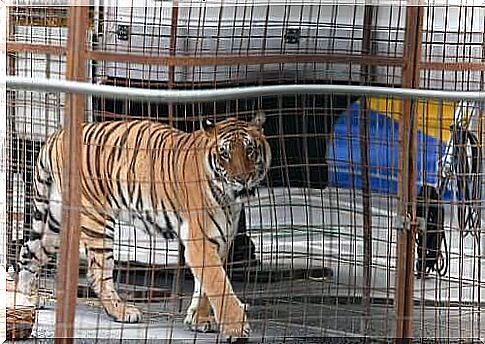Wildcats In Captivity – The Most Common Diseases

Wildcats are a diverse group of carnivores: from small cats (of the genus Felis) to large cats (of the genera Panthera, Neofelis, or Acinonyx). In today’s article we want to talk about the most common diseases that wild cats suffer from in captivity.
Infectious diseases in captive wild cats
Rhinotracheitis
All cats can develop feline rhinotracheitis. It is a very contagious disease caused by the feline herpes virus. In addition, the course of the disease is similar to that of domestic cats, in which an acute infection of the upper respiratory tract develops.
In addition, symptoms such as a discharge of nasal mucus or pus, conjunctivitis or keratitis occur. The disease usually subsides after 14 to 28 days. However, further complications can arise from bacterial infection.
In addition, rhinotracheitis can become very serious when young animals become ill, which may then need intensive care.
Calicivirus
The calicivirus is also a very contagious virus that can cause sneezing, discharge from the nose or eyes, and mouth ulcers. In addition, it can also be fatal at times, especially if the lungs have become infected. In most cases, however, the symptoms will subside within 15 days.

Panleucopenia
Panleukopenia is an acute and highly contagious viral infection that can cause anorexia, depression, vomiting, dehydration, and diarrhea. The virus carriers transmit the virus in direct contact. In addition, they remain infectious for a long time.
Although this condition is not very common in captive wild cats, it can have serious consequences. If young animals develop it, there is a risk that their central nervous system will also be affected by the panleukopenia.
Feline infectious peritonitis
Because cheetahs are particularly susceptible to this condition, zoos take precautionary measures to avoid contact with this coronavirus. In addition, it is transmitted through direct contact.
Wild cats in captivity can also develop distemper
If wild cats have had direct contact with an infected dog, this paramyxovirus can be fatal to wild cats in captivity. But even the animals that do not die from it remain carriers of this virus for their entire life.

leukemia
Although leukemia is common in domestic cats, it has also been discovered in wild cats. Basically, it causes symptoms of immunodeficiency.
HIV in captive wild cats
Although there are numerous retroviruses that can cause this disease in wild cats, most are related to the virus that causes the disease in domestic cats. The symptoms range from retinal diseases to gingivitis to neurological disorders.
Papillomavirus
This virus has been found in panthers, bobcats, lions and also leopards. However, there is usually a specific papillomavirus for each species.
Symptoms include lesions on the skin and mouth. However, in some cases the disease can worsen and lead to the formation of tumors which eventually lead to death of the animal.
Other diseases that wild cats can suffer from in captivity
Bacterial gastritis
This disease mainly affects cheetahs. It is caused by Helicobacter spp. caused. Symptoms that occur include chronic vomiting, stomach ulcers, weight loss, anorexia, and general malaise.
Bovine Spongiform Encephalopathy (BSE)
Although many people have heard of BSE, it is much better known as “mad cow disease”. It was found in captive wild cats in Europe that had been fed the meat of infected cattle.
Dermatophytosis in captive wild cats
This is a parasitic disease caused by a dermatophyte fungus (usually Microsporum canis) . Symptoms that may include: hair loss, reddening of the skin, thickening or cracking of the skin, and alopecia.
When alopecia develops, it is particularly common in the ears, limbs, and neck. However, the whole body can also be affected.








